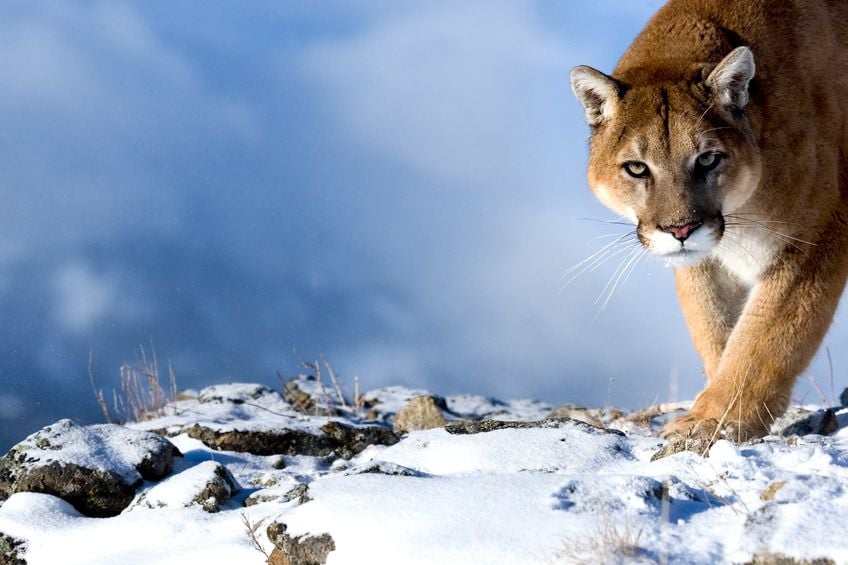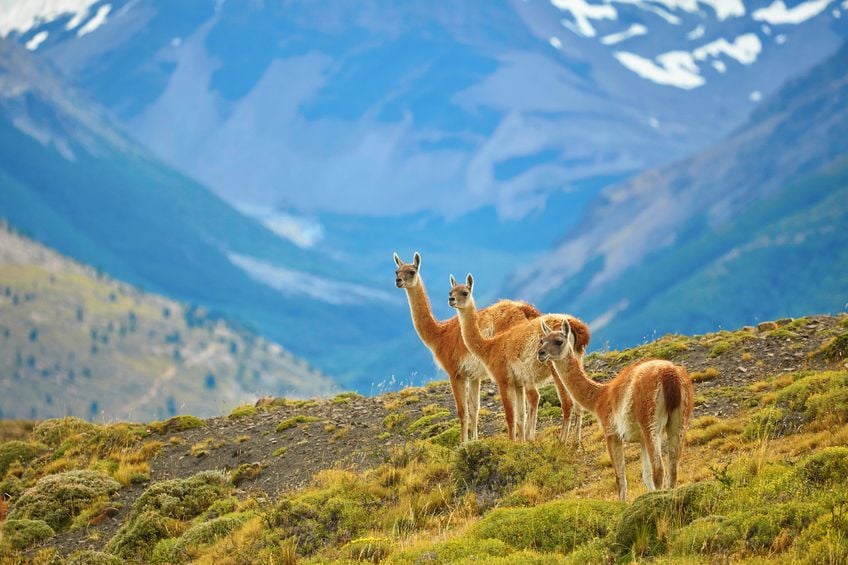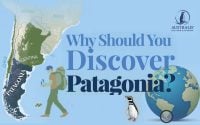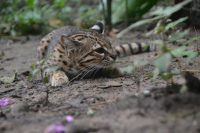Thanks to its varied ecosystems and generous portfolio of national parks and protected areas, Chile lays claim to an abundant selection of native animals. For wildlife fanatics, a wealth of marine animals and thriving bird and mammal populations await. Here are the five most magnificent Chile animals to look out for on your next trip.
1. The most elusive of all Chile animals: the puma
The South American puma, a subspecies of the puma concolor or cougar, is a predator native to Chile and Argentina. Their habitat ranges from Coquimbo, north of Santiago, to the Magallanes Region of Patagonia. Known to weigh between 77 and 88lb (35 to 40 kg) in the Central Chile zone, the pumas residing in the Aysén and Magallanes regions can reach up to an incredible 220lb (100 kg). A symbol of Patagonia, the puma is top of many traveler’s lists of Chile animals that they hope to encounter on their trip.
Where to spot pumas:
- Pumas are most commonly sighted in Torres del Paine National Park, where puma tracking tours can help you catch a glimpse of this spectacular creature.
2. Humpback and blue whales
Given Chile’s extensive coastline, it’s not unusual to encounter some of the ocean’s most captivating marine animals on a trip here. If you’re lucky, you’ll see the distinctive breaching behaviour of the humpback whale; one of the largest of the rorqual group of baleen whales and which has been observed migrating up to 16,000 miles (25,000 km) per year. The blue whale is also found off the coast of Chile and is the largest animal to have ever existed.
Where to spot humpback and blue whales:
- Humpbacks breaching above the water can be observed from a cruise ship tour in the pristine, rarely-visited water of the fjords and the Strait of Magellan.
- Blue whales are commonly spotted off the coast of Chiloé – an archipelago close to Puerto Montt, or in the Strait of Magellan near Punta Arenas.
3. Magellanic and king penguins
Chile is the location of one of the largest colonies of Magellanic penguins in South America – a species named after the Portuguese explorer Ferdinand Magellan who was the first European to encounter this type of penguin. Tierra del Fuego has the unique accolade of being the only place in the continent where you can visit a small colony of king penguins – a species not normally encountered outside of Antarctica or the South Georgia Islands, but which has made a stretch of private coast their home since 2011.
Where to spot Magellanic and king penguins:
- Magellanic penguins are prolific between September and March in Magdalena and Tucker Islands located in the Strait of Magellan.
- The king penguin colony at Bahía Inútil is open to visitors throughout the year.
4. The distant relative of the llama: the guanaco
Travelling through the mountainous regions of Chile or the altiplano close to the border with Bolivia and Peru, you’re likely to spot grazing guanacos. These animals tend to live in small herds of females with their young and one dominant male, while bachelor males form distinct groups, sometimes containing up to 50 animals.
These masters of survival have the unique capacity to withstand the extreme climes of even the most inhospitable places, so spotting a herd of guanacos is almost guaranteed on a trip Chile.
Where to spot guanacos:
- Guanacos are amongst the most abundant of all the Chile animals, and inhabit the arid grasslands and mountains of Chilean Patagonia and the altiplano in the north of the country.
5. Chilean, Andean and James’s flamingos
These three species of flamingo are spotted throughout the altiplano Andean areas of Peru, Bolivia, Argentina and Chile. The Andean flamingo is one of the rarest species of flamingos in the world, having been marked as vulnerable on the list of global endangered species. Elegant and remarkable in colour, all three types of flamingos live in colonies and are sympatric, that is, they frequently inhabit the same nesting grounds.
Where to spot them:
- All three species of flamingo can be admired on the salt flats of the Atacama Desert, near San Pedro de Atacama in the north of Chile
No comments yet
There are no comments on this post yet.








Leave a comment